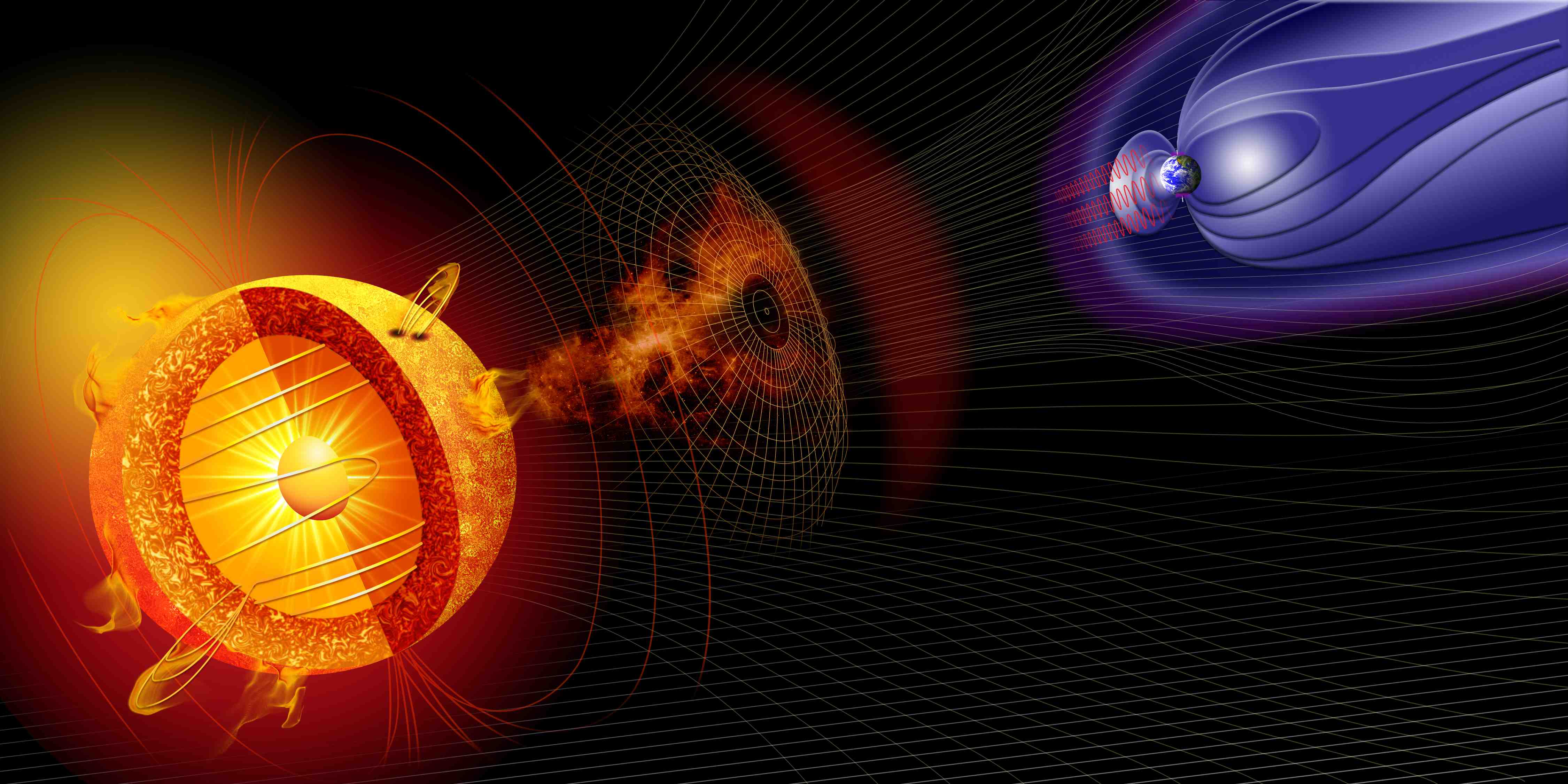Giant Halloween Solar Storm Sparked Earth Scares 10 Years Ago (Video)

Ten years ago this week, scientists worldwide got the spooks when a Halloween solar storm disrupted communications, GPS and even a United States defense operation.
While residents in Texas and Florida delighted in auroras usually not seen that far south, the storm (which was most intense between about Oct. 29 and 31, 2003) caused some spooky sun-spawned havoc both on the Earth and above it, officials with United States Geological Survey explained in a statement. You see a video of the Halloween solar storm of 2003 here.
On the International Space Station, astronauts sought shelter from the increased levels of radiation. Meanwhile, solar particles bombarded several satellites — killing the Japanese ADEOS-II, which was only launched the year before — while disrupting terrestrial networks below. [Worst Solar Storms of All Time: A Sun Countdown]
The chaos began in mid-October when increased solar activity occurred, then intensified when a coronal mass ejection left the sun on Oct. 28, 2003. These powerful solar wallops form from areas of concentrated magnetic activity on the sun called sunspots. When the sunspots eject solar matter towards Earth, auroras often follow.
This solar storm was one of the largest ones of the past half-century, and was so intense that it began to zap not only the atmosphere on Oct. 29, but interfere with vital communications networks. The strongest types of solar flares are known as X-class solar storms, and the 2003 event initially ranked a massive X28 on the space weather scale. That strength level, however, was later boosted up to X45 after more study, according to NASA records.
For comparison, the strongest solar flare of the current sun weather cycle, which began in 2008 and is known as Solar Cycle 24, was an X6.9-level flare in 2011. The sun is currently in a highly active period of its 11-year space weather cycle and has fired off several X-class solar flares in the last week, but they have so far been limited to the X1 and X2 levels.

Airlines that usually flew over the pole diverted their routes to lower latitudes, and airborne magnetic and geophysical surveys were delayed or cancelled because they could not collect data. GPS accuracy fell, which affected consumers as well as the military. The Department of Defense, in fact, had to cancel a maritime mission due to communication interference, USGS officials said.
Sign up for the Live Science daily newsletter now
Get the world’s most fascinating discoveries delivered straight to your inbox.
North Americans — who were fresh off the great power blackout of August 2003 that took out much of the Eastern Seaboard — saw their power grid stressed once again by the solar storm. As the sun triggered currents in Earth's crust, operators had to take "measures" (which were not specified in the release) to stop another blackout from occurring, USGS said.
Scientists continue to analyze the results, USGS said, with the hope of making more robust satellites, communication networks and other vital parts of Earth's infrastructure for when the next storm arrives.

Through USGS's 14 ground observatories, agency officials gather data about these storms. They "conduct research into the physical causes of magnetic storms, and they develop products useful for real-time situational awareness of geomagnetic hazards and to assessing the hazardous effects of magnetic storms," USGS stated.
The data is used by NOAA's Space Weather Prediction Center and the U.S. Air Force Weather Agency, among others, to issue forecasts when the sun gets active.
Follow Elizabeth Howell @howellspace, or SPACE.com @Spacedotcom. We're also on Facebook and Google+. Original article on SPACE.com.

Elizabeth Howell was staff reporter at Space.com between 2022 and 2024 and a regular contributor to Live Science and Space.com between 2012 and 2022. Elizabeth's reporting includes multiple exclusives with the White House, speaking several times with the International Space Station, witnessing five human spaceflight launches on two continents, flying parabolic, working inside a spacesuit, and participating in a simulated Mars mission. Her latest book, "Why Am I Taller?" (ECW Press, 2022) is co-written with astronaut Dave Williams.










